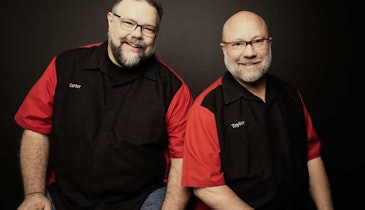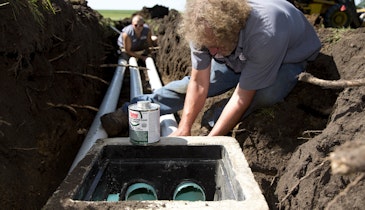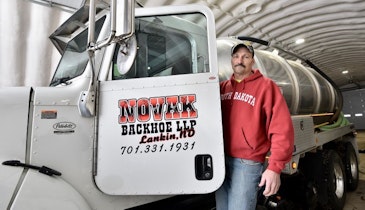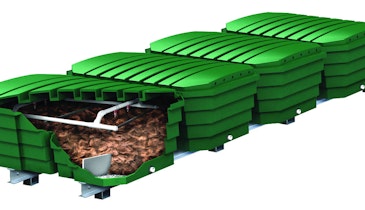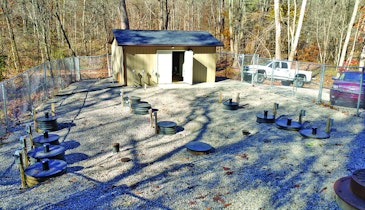Every so often I see a statistic that reminds me of the enormous demand for onsite installing services. It happened again recently, and as we look toward a new year, this story reinforces your decision to invest in an onsite business or steer your career toward the wastewater industry.
The city of Jacksonville, Florida, is grappling with a hodgepodge of wastewater solutions that — in addition to its municipal sewer system — includes 65,000 septic systems in an urban community. Facing a clean-water crisis and algal blooms caused by nitrogen overloading in sensitive waterways, the city wants to phase out aging and inadequate septic systems and gain control of the problem.
It’s an estimated $2 billion project, and to say it won’t happen overnight is huge understatement. News accounts point out about two-thirds of the septic systems are still working properly, while a priority must be set to replace the failing systems first. That’s reasonable.
But how does this happen? And what is the timetable?
This is when Jacksonville City Councilman Ron Salem made a telling statement that should encourage installers about the future of the industry.
“It is my personal feeling that this is not an issue that’s going to be solved in five years or 10 years,” Salem said. “This is a 30- to 50-year issue. But you have to start somewhere.”
Think about that. In one city in the U.S., the changeover from septic to sewer will take 30 to 50 years to complete. That means that a 20-year-old installer crewmember who starts his career today could still be building, maintaining and decommissioning septic systems in Jacksonville for the rest of his or her working life.
And that’s nothing to be said for the rest of Florida, much of which will never convert to a metropolitan sewer line. Outside of the popular coastal cities, millions of homeowners and businesses will continue to rely on decentralized wastewater treatment. All new construction in these areas will need a system, and millions of aging systems in Florida will have to be replaced with new and improved technologies that will better protect a region with extremely high groundwater tables and ample protected environments.
As communities confront the reality of wastewater systems that have been long ignored and continue to deteriorate, two questions come to mind that will drive the discussions: Who’s going to pay for these improvements? And who is going to do all the work?
DOLLARS AND SENSE
It’s often said to “follow the money” when you want to unravel a mystery of any kind. So let’s start there first. New systems can be costly, and home and business owners will have to step up to the plate and invest in a critical private utility — wastewater treatment. I always argue that septic systems provide a great value to users over time. If you take into account the initial construction costs, required maintenance and pumping, onsite systems will often cost less over, say, a 20-year system life compared to a sewer hookup and monthly user fees.
When explained that way, most septic system users will understand that the expenditure is necessary. However, onsite improvements are one of the only areas where the government has indicated a willingness to invest in a private utility for which the homeowner draws the benefit.
U.S. counties and states are looking at the need to improve wastewater treatment to protect the environment, and are pledging funds to aid homeowners facing these large bills. Every year I see more governments announce cost-sharing programs for septic system replacements, routine pumping and periodic system maintenance.
In Jacksonville, one official estimated each household in one neighborhood would face $53,000 in costs to replace failing systems, presumably to provide effective treatment as they wait for the municipal system to grow. The city is looking at ways to help out.
“Grants, federal grants, state grants. Those are great sources of potential revenue, but I think it’s going to take something much larger than that,” Salem says.
Think about the retirees living on fixed incomes being presented with a bill for $30,000 to upgrade the conventional box-and-rocks system they built at their home when they were newlyweds 40 year ago. Look at the dwindling savings accounts of working families and imagine how they can cope with an invoice like that. They won’t be able to do it on their own.
So I expect the government aid programs to continue to broaden their scope across the country and find public acceptance because A) everyone can relate to getting a hefty, unexpected bill and B) ultimately folks want clean drinking water and lakes and rivers safe for recreation including swimming, boating and fishing. The help in funding will drive the building of millions of new systems over the next few decades.
DIGGING THE INDUSTRY
That leads back to a predicted bright future for installers. With so much work expected to materialize in the coming years, every one of you will be needed to get the job done. Look around your service territory. How many contractors like you do you see? It’s probably only a handful, and some of them see retirement on the horizon.
Now look at the growth of suburban and exurban (the ring or territory just beyond the suburbs) areas. New houses are going up all the time and often they will utilize decentralized wastewater treatment. That’s because many of the big municipal sewer providers are not favoring expansion at this time. And because the U.S. EPA now considers onsite systems as a valid permanent treatment solution in many cases.
Add to the new-construction demand the need for replacement systems and there is more than enough growth potential for all onsite installers. Additionally, pretty much every installer I know could take on more jobs if they could find more quality workers. Workforce development will be the biggest issue facing installers in 2021 and beyond.
So as you prepare next year’s calendar, take the time now to explore how you can attract new workers to this industry. We need to share the promising outlook for young people willing to operate equipment and get their hands dirty. A lot has been said recently about the benefits of trade school education and students choosing a trade over pursuing a four-year degree. The onsite industry needs to trumpet that message, and back it up by offering high wages, good benefits and an obvious path to success for these workers.
We’ll see you in the new year!

